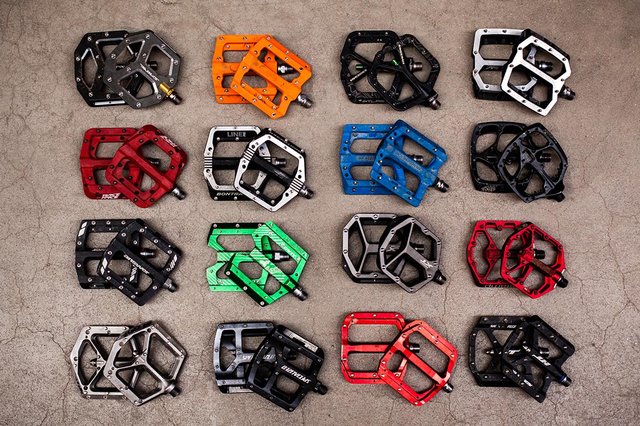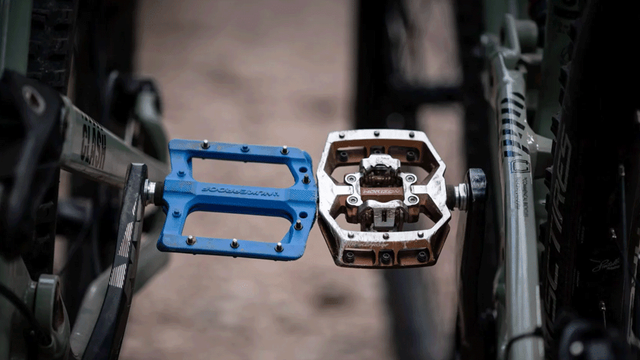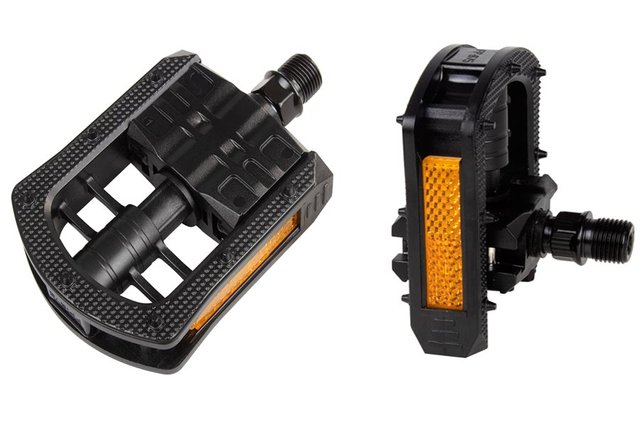Different Types of Bicycle Pedals: A Guide to Choosing the Right One-29-03-2025
The pedal is one of the most essential parts of a bicycle, as it allows you to transfer the power from your legs to the wheels. However, not all pedals are the same, and there are different types designed to meet the specific needs of each cyclist. Choosing the right pedal can enhance your cycling experience and improve performance. Below, we present the most common types of bicycle pedals and their characteristics.

1. Flat Pedals (Platform Pedals)
Flat pedals are the most common and easiest to use. They are designed to be comfortable and practical as they do not require special shoes to use. These pedals are ideal for beginners and urban cyclists who do not require high performance or extra foot support.
Advantages:
- Easy to use and convenient with any type of shoe.
- Ideal for beginners and urban cyclists.
- No special skills required for use.
Disadvantages:
- Do not provide additional control or pedaling efficiency compared to other types.
2. Clip Pedals
Clip pedals feature small clips or straps that secure the foot to the pedal. This provides more security and control while pedaling, preventing your foot from slipping off. Clip pedals are popular among mountain bikers and road cyclists.
Advantages:
- Better control of the pedal stroke.
- Improved performance on long rides or competitive cycling.
Disadvantages:
- Requires some practice to clip in and out.
- Less comfortable when used with regular shoes.

3. Clipless Pedals
Clipless pedals, also known as automatic pedals, are popular among advanced road cyclists and mountain bikers. Unlike clip pedals, these allow the cyclist to "clip in" to the pedal via a quick-release mechanism, offering better pedal control by allowing force to be applied both downward and upward.
Advantages:
- Greater efficiency and control during pedaling.
- Improved performance by applying force on both the upstroke and downstroke.
Disadvantages:
- Requires specific shoes to clip into the pedal.
- Can be difficult to unclip if you don’t have experience.
4. Platform Pedals with Pins or Tacs
These pedals are designed with small metal pins or tacs on the surface to provide better grip. They are ideal for mountain bikers who need a sturdy pedal that offers control and stability on rough terrains.
Advantages:
- Provides excellent grip even in wet or muddy conditions.
- Easy to use, as they don’t require special shoes.
Disadvantages:
- Can be less comfortable for long rides.
- Your foot isn’t as secure as with clipless pedals.
5. Triathlon Pedals
Triathlon pedals are designed specifically for maximizing efficiency in long-distance races. They are typically lighter and built to allow quick transitions while ensuring the cyclist can pedal efficiently and fast.
Advantages:
- Lightweight and designed for speed.
- Easy to use for quick transitions in triathlons.
Disadvantages:
- Less comfort for long distances or rough terrains.
- Requires triathlon-specific shoes.
6. Toe Clip and Strap Pedals (Speed Pedals)
This type of pedal, mostly used on track bikes and racing bikes, allows the cyclist to exert force on both the downstroke and upstroke by securing the foot with a strap or clip. Although less common, they are ideal for maximizing performance in specific cycling situations.
Advantages:
- Improves pedaling efficiency.
- Maximizes performance in track cycling and competitions.
Disadvantages:
- Not suitable for mountain biking or rough terrains.
